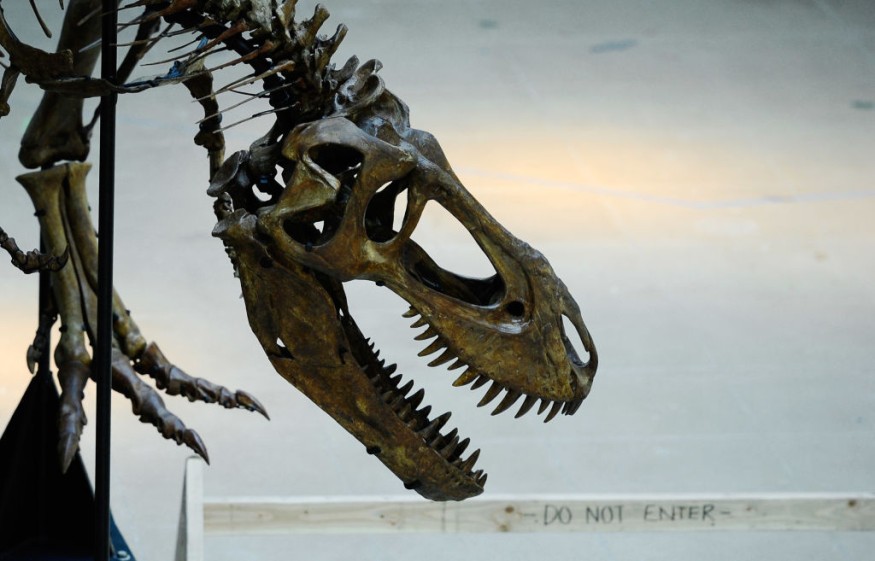A four-foot-tall, 10-feet long, and 110-million-year-old skeleton of a frightening dinosaur featured in a horrifying setting in Jurassic Park has been sold for an ample amount of $12.4 million at auction.
As specified in a Mail Online report, the skeleton "belongs to apex predator Deinonychus antirrhopus which became one of the most recognizable dinosaurs in the world, after the blockbuster Jurassic Park was released in 1993, in which it stalked the children via a kitchen.
Dino-mite sale! 110 million-year-old skeleton of a fearsome dinosaur that inspired the 'raptor' in Jurassic Park sells for $12.4 MILLION at Christie'shttps://t.co/FZPpzHAlgo#Dinosaur pic.twitter.com/6LbWSsqDvb
— STEFAN (@nevadaknight67) May 13, 2022
Nonetheless, the true name of the creature was not considered dramatic enough by the book's writer, on which the film was based.
Instead, Michael Crichton, the author opted to call it "velociraptor" which was actually a much tinier relative of Deinonychus.

Over 120 Fossilized Bones
Auctioneers Christie's, the said report specified, sold "Hector," the only privately owned Deinonychus fossil of the world, at a New York-based prestigious auction.
Comprising 126 fossilized bones, Hector is the biggest, not to mention, most complete specimen of its kind ever found, even though part of its skeleton and most of its skull are rebuilt, according to the auction house.
The fossilized bones ignited a fierce bidding battle and dwarfed the expectations of the valuer, selling for $12.4 million, more than twice the auction of the estimated high of $6 million of the auction house, a similar Times of News report specified.
The exceptionally unique artifact attracted the collectors' attention from all over the world, as the vast majority of dinosaur fossils belong to museums. Reports said an anonymous buyer purchased the skeleton.
The trend in Fossil Sales
The expensive fossil sales trend has annoyed some paleontologists, who worry that specimens could turn lost to science if they are purchased by private individuals instead of public institutions.
For instance, in 2020, a 40-foot-tall T-Rex skeleton called "Stan" broke the world record for sale of a dinosaur by four times, swelling at the same auction house for $31 million, also to an unknown bidder.
Nonetheless, commercial paleontologists contend that their work is crucial to science as well and that they should be paid so they keep doing it.
The Deinonychus, which means "terrible claw" was excavated in Wolf Canyon, Montana, the United States between 2012 and 2014, where it had lain nearly perfectly preserved for roughly 110 million years since the early Cretaceous era.
The sample was unearthed by self-taught paleontologists Jack and Roberta Owen said commercial paleontologist Jared Hudson, who bought and prepared the sample.
'Hector'
Hector has just been displayed publicly once before at the Natural History Museum of Denmark in Copenhagen.
According to a specialist at Christie's, James Hyslop, it was an indisputable privilege to exhibit a rare dinosaur species, especially one esteemed both worldwide and culturally.
This iconic predator stays truly exciting to a global audience and is one of the most popular dinosaurs. With a handful of documented samples discovered and only a pair of skeletons in museum collections, the so-called Raptor is the lone most complete Deinonychus known to exist, and the sole privately owned sample.
The agile and swift Deinonychus stalked the earth from 115 to 108 million years ago, 50 million years prior to the T-rex.
Lastly, the discovery of the Deinonychus in 1964 triggered a change in scientific understanding of dinosaurs which were believed previously to be cold-blooded and lizard-like creatures.
Rather, it is currently thought that they were warm-blooded animals associated with the birds' early evolution.
Related information about the discovery of dinosaur fossils is shown on South China Morning Post's YouTube video below:
RELATED ARTICLE : At Least 10,000 Desperate and Thirsty Camels in Danger of Being Shot in South Australia
Check out more news and information on Paleontology in Science Times.










